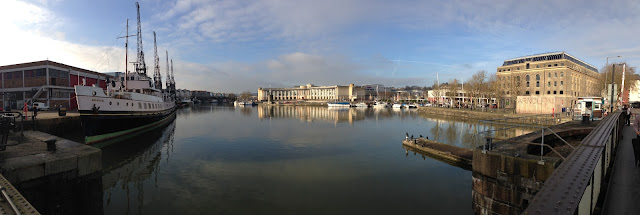I recently spent some time in Bristol, and while there I went in search of some exhibitions. This proved to be quite a struggle as most Art Spaces and Museums such as the Arnolfini and Spike Island were between exhibitions. So I ended up walking up to the Bristol Museum where the 'No Borders' exhibition was taking place.
'No Borders considers how we are all linked internationally and politically, through our histories and the economic system that increasingly dominates the world. Using the traditional damask walls of the art galleries as a backdrop, the exhibition is an intervention in the museum building. No Borders reflects on global stories from local perspectives.' - Taken from the No Border exhibition programme.
The No Borders exhbition mainly consisted of artists from Asia and Africa. This was incredibly interesting to see as I had never seen Art before from places like Pakistan and Iran. A quote from Imran Qureshi (one of the artists exhibiting) summed up this strange realisation: 'I think that in the West you have a false idea about [Pakistan]. It's believed and wrongly so, that we are gagged and limited in our artistic production.'
This may be true, however it raises the argument of how many people in Pakistan actually have the liberty to practice art or express themselves at all. Due to what we could see as a cultural moral oppression where there is still a very strict line of what can and cannot be said. Something that in Western Society has been almost completely eliminated.
I cannot say for sure either way because I neither know many Pakistani people and I have never been to Pakistan.
Imran Qureshi's pieces were the most powerful there in my opinion. Qureshi had meticulously painted floral patterns and presented them amongst a splatter effect. This and the incredibly vivid red that he used portrayed the innocent blood of two boys who were murdered in Pakistan and the corruption of the Pakistani police which was to blame. When looking at Qureshi's work you can become bewildered with the beauty and intricacy of the work but then when it becomes apparent the meaning and gesture behind the work it creates an even more powerful effect.
The main themes which became apparent to me throughout the exhibition were the references to civil wars, political corruption, work force oppression and poverty. This added meaning to the idea that an artist can only respond this his or her personal landscape. Although it was interesting to see that each artist in the exhibition shared similarities in the meaning and intentions of their work. This also lead me on to thinking how my work would change and develop if I changed my surroundings.


No comments:
Post a Comment